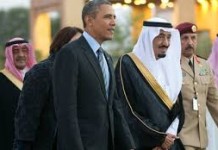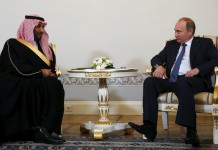Context
.jpg)
PoliTact has recently been examining the threat which is emanating from the US-based Muslim community directed not only towards itself but also abroad and identified this as part of a pattern, Terrorism 2.0. Over the weekend yet another potential attack in New York was averted.
Analysis
There have been a series of recent incidents involving the US Muslim community, which point to a troubling pattern. These include:
- Last year, up to 20 young Minnesotans of Somali descent joined Al Qaeda-linked Al-Shabaab in Somalia.
- Major Nidal Malik Hasan, of Palestinian origin, the culprit in the Fort Hood Shooting in Texas on November 5, 2009, was instigated by a Yemeni cleric
- Najibullah Zazi, of Afghani origin, was arrested last year for participation in a bombing plot linked to Al Qaeda.
- Two men, David Headley and Tahawwur Hussain Rana, both of Pakistani origin, are suspected of having played a role in the Mumbai attacks and of ties to Lashkar-e-Tayiba.
- Five American students were arrested in Sargodha, Pakistan for attempting to join Al Qaeda-linked jihadists.
- An American woman by the nickname of JiahdJane (LaRose) was arrested early this year. She lived near Philadelphia and was allegedly recruiting men and women from America, Europe and South Asia to wage a violent jihad. She was also suspected of plotting and providing material support for an attack in Sweden.
To this list can now be added the attempt to blow up a SUV right in the middle of New York. The culprit, Faisal Shehzad, originally hails from Khyber Pukhtunkhwa (formerly NWFP) province of Pakistan, and was naturalized as a US citizen only about a year ago. In this article we will connect the dots with our previous projections in this regards, and to point where things are heading.
{youtube}QrGzySF87j8{/youtube}
To its credit, President Obama and his administration have devoted considerable efforts towards improving relations with the Muslim world and to delink it from the primary focus of terrorism. However, the US foreign policy for the most part still operates under the premise that what it does overseas has no implications on its own ethnic relations.
PoliTact had earlier examined the motivation behind the attacks listed above and presented the following conclusions:
- Although many in the American Muslim community lead successful middle-class lives, there is still much alienation because of a widespread feeling that their views have little or no influence on US foreign policy, in comparison to those held by other groups – in particular, those of European, Jewish and Indian origin.
- Members of the American Muslim community empathize with the grievances of their counterparts in Palestine, Kashmir and Chechnya, and perceive US foreign policy as biased against Muslims.
- The earlier European immigrants were cut off from the countries of their origin. The communication revolution and globalization has made it easier for the most recent immigrants to maintain a sense of connection to their native lands.
The most dramatic development associated with the Time Square incidence is its possible connection with the Tehrik-e-Taliban Pakistan (TTP) and the emergence of its deceased leader Hakimullah mehsud, who was widely believed to have been killed in a previous drone attack, like his predecessor Baitullah Mehsud. In a video message that has surfaced, TTP leadership not only claimed responsibility for the Time Square attack but also has threatened the US with many more to avenge the elimination of TTP and Al Qaeda leadership in Pakistan and other places. The killing of formerISI official Khaled Khwaja recently in FATA could also be a part of these revenge attacks. TTP has also previously claimed responsibility for the last year’s deadly attack on the CIA based in Khost Afghanistan.
Thus serious questions regarding the capability of TTP to back such threats and claims have emerged. Is it exaggerating to reclaim its much-diminished notoriety? Or, has it actually become capable despite the persistent drone attacks and military operations of Pakistan Army. In poliTact’s view TTP, like other players, is also attempting to position the organization for the negotiations associated with US withdrawal from the region. The best way to achieve attention as a serious actor is to claim global reach like Al Qaeda. Furthermore, TTP wants to dent the growing Pak-Us Strategic understanding as well as the improving Indo-Pak relations. The timing of the release of the video message does covey how media savvy these extremists groups have become, as they attempt to exploit the domestic political sensitivities of US, Pakistan and India.
At the same time, these recent incidences related to terrorism also need to be understood from the prevailing geopolitical situation of the AF-Pak region. PoliTact had noted in its Decenber 2009 analysis:
“We are also convinced that events of next year will further prove to the Pakistani Government that the Afghan Taliban and Punjabi/Kashmir-related jihadists, like the TTP, are in bed with Al Qaeda and a threat to Pakistan. The timing of these events will be connected to Pakistan’s performance against the extremists and the status of US surge in Afghanistan. If it seems that Pakistan has been able to control its domestic situation and has entered into some kind of peace agreement with Taliban, while US surge in Afghanistan appears to be not going well, this will be the most likely time for an attack to occur in India.”
Although we did not mention US specifically in this particular forecast, the threat of such potential attacks against India or any other country, strengthen the moral justification and the urgency to go after remaining hideouts of these groups. In the present situation, Pakistan may have been comfortable with where it is in its fight against terrorism, but other international players may not have the same level of comfort and would now want it to act against groups operating from North Waziristan, irrespective of their affiliation or strategic use. NATO and the US would particularly want a military operation in North Waziristan before its Kandahar sweep, planned for this summer.
It should be noted that Pakistan Army has also been preparing for such an operation for a while and has had time to ponder over tactics and strategies to deploy. The dynamics of North Waziristan are quite different from Swat and South Waziristan. The Pakistan Army has hoped to divide the factional groups into to the ones on its side and those against it. However, this distinction might be hard to maintain at this juncture. The following scenarios could play out:
- Afghan Taliban might be pressured to terminate its ties with TTP and Al Qaeda affiliated groups.
- They may convince Punjabi/Kashmiri Jihadists to back off since there has been progress with India on the diplomatic front and in regards to Kashmir.
Pakistan’s main emphasis will be to isolate the TTP affiliates from Al Qaeda, Afghan Taliban and other Punjabi/Kashmiri Jihadist as much as possible. On the flip side, these groups recognize their capability and leverage is considerably diminished when they stand alone.
Tell Us What You Think
Feedback@politact.com



